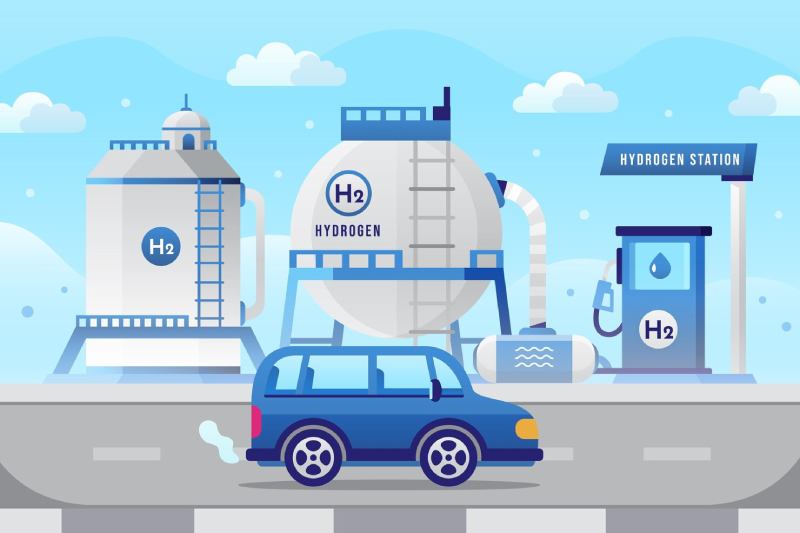Panama, strategically located at the crossroads of the Americas, sits on the isthmus of Panama separating the Atlantic and Pacific Oceans. This prime location makes the country, along with the Panama Canal, a vital link in one of the world’s busiest maritime trade routes. Panama has been actively developing its energy sector to enhance sustainability and energy security. As of 2023, Panama’s Gross Domestic Product (GDP) was approximately USD83.38 billion, reflecting an 8.96 per cent increase from 2022.[ 1 ] The economy is primarily driven by the services sector, which contributes about 68 per cent to the GDP, followed by industry at 27 per cent, and agriculture at around 3 per cent. [2 ]
Panama’s energy sector is characterized by a diverse mix of renewable and non-renewable sources. The total installed electricity generation capacity is approximately 4.4GW.[ 3 ] Historically, the electricity mix has included a significant share of renewables, with hydropower being prominent. As of recent reports, renewable energy sources contribute approximately 80 per cent to Panama’s electricity generation, with hydro alone accounting for over 50 per cent. [ 4 ]

Figure: L-R: Installed Capacity in Panama; Electricity generation in Panama [ 5 ]
Panama has implemented several policies to promote renewable energy development. The National Energy Plan outlines objectives for sustainable and indigenous resource utilisation. Additionally, the country is a participant in regional initiatives such as the Central American Electrical Interconnection System (SIEPAC), which seeks to integrate the electricity networks of Central American countries.
Panama is actively positioning itself as a key player in the global green hydrogen market, leveraging its strategic location and renewable energy resources to develop a robust hydrogen supply and demand framework.
Given the Panama Canal’s status as a critical global shipping route, the maritime industry is a primary focus for hydrogen utilisation. The national green hydrogen strategy includes:
In addition, Tocumen International Airport, the largest in Central America, positions Panama to integrate hydrogen into aviation fuel. The strategy sets consumption targets of:
Panama plans to establish an inter-governmental organization to facilitate the international trade of renewable hydrogen and its derivatives. This initiative aims to standardize certification and trading practices, ensuring consistent and accessible clean fuel markets.
Panama aims to position itself as a leader in the global green hydrogen market through the development of comprehensive policies and initiatives. The cornerstone of this effort is the National Strategy for Green Hydrogen and Derivatives, approved by the Cabinet through Resolution No. 70 on July 11, 2023. [ 5 ] Key Objectives and Targets include –

The strategy is built upon several key pillars:
Panama's green hydrogen strategy is still in its early stages, and while the National Strategy on Green Hydrogen and Derivatives sets ambitious goals and guidelines, specific regulations are still being developed. The strategy itself acts as a framework for future regulatory measures, focusing on production targets, sectoral integration, and international cooperation.
Panama is engaging with international organizations and countries to align its regulatory framework with global standards. Collaborations with entities like the European Union and the Inter-American Development Bank provide technical assistance and facilitate knowledge exchange, enhancing the effectiveness of Panama’s regulatory measures.

Panama is strategically leveraging its renewable energy infrastructure to support the development of a green hydrogen economy. The country’s abundant renewable resources, particularly in hydroelectric and wind energy, provide a robust foundation for green hydrogen production. As of 2023, total renewable energy capacity stands at almost 3 GW. [6 ]
Hydropower is a cornerstone of Panama’s renewable energy sector, contributing significantly to the national electricity supply. As of 2023, the country has over 1,800 MW of hydro capacity. [7 ]
Panama has made significant investments in wind energy, with notable projects such as Penonomé Wind Farm. This is the largest wind farm in Central America with an installed capacity of 270 MW.
The integration of wind energy into the national grid diversifies the renewable energy portfolio, offering additional capacity for green hydrogen production.[ 8 ]
While still in the early stages, solar energy development is gaining momentum in Panama. Several photovoltaic projects are underway, contributing to the renewable energy mix and providing further potential for green hydrogen production.
As of November 2024, Panama does not have established facilities for manufacturing electrolysers, which are essential for green hydrogen production. The country’s current focus is on harnessing its abundant renewable energy resources to produce green hydrogen, as evidenced by the National Strategy for Green Hydrogen and Derivatives approved in July 2023. This strategy aims to position Panama as a global hub for green hydrogen production and distribution, leveraging its strategic location and renewable energy capacity.
Panama is actively advancing its green hydrogen sector through various projects, pilot initiatives, and strategic partnerships. Key developments include: